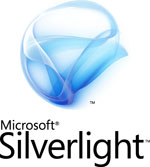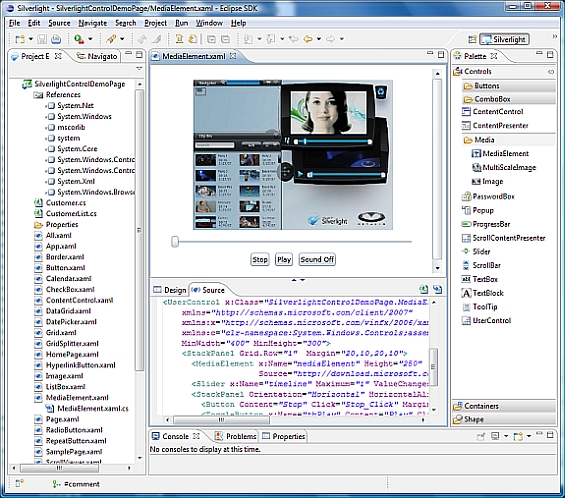 Microsoft Silverlight is a cross platform, cross browser and cross device plug-in that enables designers and developers to build rich media experiences and rich internet applications (RIA) for the web. It significantly reduces development and deployment costs and provides enhanced Web audio and video streaming and playback.
Microsoft Silverlight is a cross platform, cross browser and cross device plug-in that enables designers and developers to build rich media experiences and rich internet applications (RIA) for the web. It significantly reduces development and deployment costs and provides enhanced Web audio and video streaming and playback.
Silverlight is similar to (and in some way competitor to) Adobe AIR and Google Gear.
Microsoft announced the new version Silverlight 2, which provide solutions for the creation and delivery of applications and media experiences through a Web browser. With the new release, the Silver Light development can be done with the Visual Web Developer 2008 Express Edition, which is a free download.
Silverlight 2 delivers a wide range of new features and tools that enable designers and developers to better collaborate while creating more accessible, more discoverable and more secure user experiences.
[advt]
Microsoft will support and fund a project to integrate advanced Silverlight development capabilities into the Eclipse development platform. It will be available on SourceForge as open source. The project enables Java developers to use the Eclipse platform to create applications that run on the Microsoft Silverlight runtime platform. This Eclipse Tool for Silverlight will be available in second half of 2009.

Microsoft also will release the Silverlight Control Pack and publish on MSDN the technical specification for the Silverlight Extensible Application Markup Language (XAML) vocabulary.
New Features in Silverlight 2
- Silverlight 2 supports a variety of programming languages, including Visual Basic, C#, Managed JavaScript, IronPython and IronRuby.
- With Silverlight 2, developers do not have to convert their existing code to JavaScript to run inside the client. Instead, Silverlight 2 supports Asynchronous Ruby and XML (ARAX) and Asynchronous Python and XML (APAX) applications.
- Silverlight 2 provides a rich base class library as a compatible subset of the full .NET Framework. It provides data access capabilities, local data caching and local data storage, superior input-output (IO) performance, and better threading. By leveraging the rich base class library of the .NET Framework, developers can minimize the amount of additional code they have to write for their projects.
- Silverlight 2 includes APIs that enable the creation of better asynchronous JavaScript and XML (AJAX) applications, with improved HTML DOM/JavaScript integration with .NET code and with better data access through Language-Integrated Query (LINQ) and LINQ to XML library support.
- Powerful built-in rich controls to quickly build applications through a rich set of built-in controls such as DataGrid, ListBox, Slider, ScrollViewer and Calendar.
- Advanced styling and templating support to develop better look and feel of an application
- Silverlight 2 provides a Rich UI Library, a compatible subset of the WPF user interface framework of the .NET Framework.
- The UI Framework in Silverlight contains support for higher-level UI capabilities such as layout management, data-binding, styles and template skinning.
- Provides comprehensive networking support to leverage the power of the .NET Framework’s Windows Communication Foundation
- It comes with out-of-the-box support for calling REST, WS*/SOAP, POX, RSS and standard HTTP services
- Advanced content protection features, including Silverlight DRM
- The new Deep Zoom technology in Silverlight provides smooth, in-place zooming and panning. Super-high-resolution images can easily used on the Web. Deep Zoom is designed to reduce Web hosting and bandwidth costs by sending to the browser exactly the right size and resolution image for the current display area.


Be the first to comment